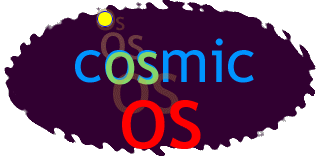
|
outline goals status downloads references |
Development has moved to cosmicos.sourceforge.net.
You design a language for cosmic intercourse. Hans Freudenthal
made a start at one in his book, Lincos, published in 1960.
I think it's time for version II, the
all-new action-packed sequel guaranteed to have you on the edge of
your seat, which is a specific structure with a flat surface
perpendicular to the pull of gravity, which is a thing that, oh never
mind.
The message has a strong backbone of actual executable code. The
results of executing code is fundamentally what gets talked about in
most of the message so far. This has the advantage that it can be
understood on two levels: working out what the code does by looking at
its details, or just treating it as a black box and learning from
examples what it does. It also gives the listener the ability to
do experiments using the code that are not talked about in the
message. At the level of the MUD, this means the listener is free
to play around with the simulated world and understand its logic
through experimentation.
A difficulty with using code is that it assumes the listener has
a computer to run the code on, or is computer-like enough themselves
to work through the code with excruciating patience. I'm okay with
this assumption for now, since it is hard to imagine the message
being detected in the first place without some good hardware.
Outline of CosmicOS
It's a familiar problem. You've finally managed to contact that alien
civilization. Things are going great. You feel like your world will
never be the same, that whole new realms of possibilities are opening
up before your eyes. Then, inevitably, a hint of strain starts to
creep into your relationship. You find that you don't really have all
that much in common. Heck, sometimes it feels like you're not even in
the same galaxy. It's as if there is this vast gulf between you,
making communication almost impossible. You're not even sure you'd
understand each other no matter how physically close you become. What
do you do?![]()
more...
Goals of CosmicOS
The "intelligence" reading the message could be extra-terrestrial,
or artificial. It is this second possibility that motivates me -- I
want this message as a challenge for AI -- but the ET possibility is
also fun.
Current status
The current goal of development work on CosmicOS is to communicate
enough structure to simulate a simple MUD (multi-user dungeon) and to
use the interactions between locations, objects, and characters as an
alternative to the clever "morality plays" in Lincos.Source code
References
AUTHOR : Freudenthal, Hans
TITLE : Lincos; design of a language for cosmic intercourse.
LANGUAGE : ENGLISH
PUBLISHED : Amsterdam, North-Holland Pub. Co., 1960-
PHYSICAL DESC : v. 23 cm.
SERIES : Studies in logic and the foundations of mathematics;
SUBJECT : Lincos (Artificial language)